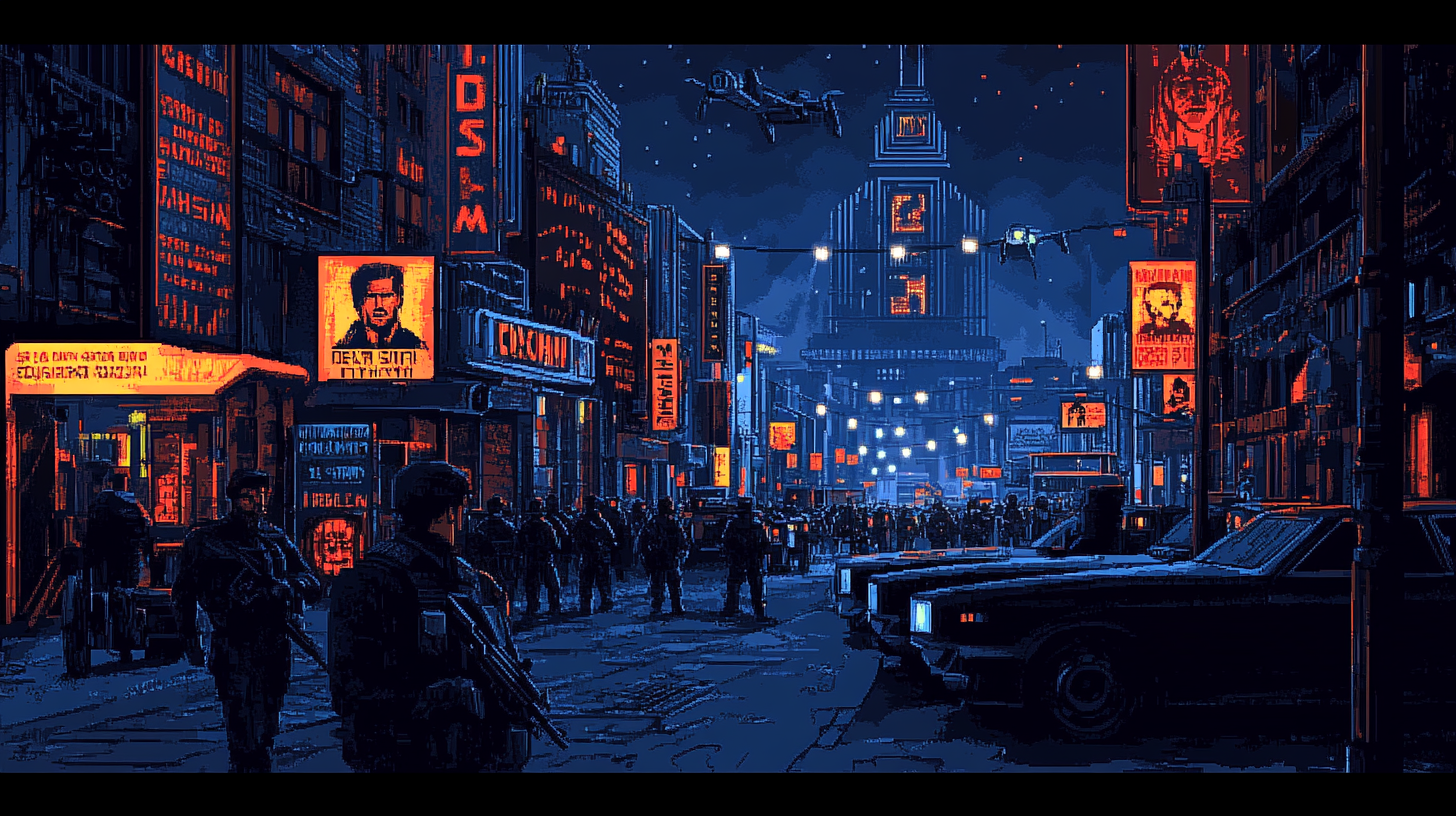The Enduring Power of A.E. van Vogt’s "Slan"
A look at A.E. van Vogt’s "Slan," the 1940 classic that shaped science fiction’s golden age with its tale of persecution, power, and a boy who might represent humanity’s next evolution.

Published in 1940 in the pages of "Astounding Science Fiction," A.E. van Vogt's "Slan" emerged at a pivotal moment in the development of the genre. The world stood on the brink of global conflict, and science fiction was beginning to shift from space opera spectacles toward stories that asked deeper questions about humanity, power, and survival. "Slan" helped lead that charge, delivering a narrative that was equal parts thriller, parable, and warning.
The novel follows Jommy Cross, a telepathic boy born into a persecuted race of advanced beings known as Slans. Hunted by the government and mistrusted by the masses, Jommy must navigate a society that both fears and misunderstands his abilities. Without dwelling on sentimentality, van Vogt presents a scenario in which fear of the unknown drives a civilization to extremes. The story raises questions about identity, progress, and the burden of being exceptional.
"Slan" arrived during an era when concerns about evolution, genetics, and authoritarianism were rising to the surface. Van Vogt does not lecture the reader. He dramatizes the danger and confusion of a society caught between its instincts and its ideals. Through a fast-moving narrative, he sketches a world where survival depends on power, restraint, and wisdom.
The appeal of "Slan" remains strong today. Its central conflict touches on enduring dilemmas—what happens when a society is confronted with beings who represent the next step in human development. Can fear be tempered by understanding? "Slan" continues to matter not because it offers easy answers, but because it reminds us how often the hardest questions are the most important.
A World Built on Fear
The society van Vogt presents in "Slan" is not just oppressive. It is structured around hostility. The government exerts total control over its citizens through propaganda, surveillance, and brute force. This is not tyranny for its own sake. It is a regime sustained by fear. That fear is directed squarely at the Slans, who represent everything the rulers cannot predict or dominate.

From the beginning, the atmosphere surrounding Jommy Cross is one of constant threat. Slans are portrayed as enemies of the state and hunted without mercy. The public, saturated with official warnings and horror stories, accepts the persecution as necessary. Fear becomes both the shield and the sword of power. It justifies extreme measures and suppresses any sympathy for the persecuted.
Van Vogt explores this fear in layers. It is not only fear of being overpowered but fear of being replaced. The Slans possess abilities that seem to point toward the next stage in human development. Rather than welcome progress, society recoils. The telepathy, superior intellect, and resilience of the Slans become sources of dread rather than hope. Fear of change overtakes any interest in understanding.
This theme echoes across history. Time and again, civilizations have turned against their most gifted or unconventional members in the name of security. Van Vogt captures that cycle with precision. He does not moralize. Instead, he lets the machinery of fear grind forward, showing how easily suspicion becomes policy and how quickly strength is mistaken for threat.
The world-building in "Slan" carries the hallmarks of early science fiction. It is dense with imagined technologies, secret organizations, and layered power structures. Each element serves the story but also reflects the larger anxieties of the time. Van Vogt's future feels both exaggerated and disturbingly familiar. In this grim society, fear is not just an emotion. It is the foundation of rule. And it raises the question—what kind of future are we building when fear leads the way?
Jommy Cross and the Code of Honor
Jommy Cross stands at the heart of "Slan," not only as its protagonist but as its moral anchor. Van Vogt gives him abilities that far exceed those of the average human. Jommy's mind can penetrate others' thoughts. His memory, perception, and reasoning are exceptional. Yet these gifts are not treated as mere plot devices. They are the source of his isolation and his greatest burden.
From an early age, Jommy is forced to fend for himself. He is hunted and alone, yet his conduct remains principled. Rather than lash out, he endures. Rather than hide indefinitely, he works to understand his enemies and his inheritance. In this, he reflects a familiar figure in American fiction—the boy who becomes a man not by chance, but through grit, discipline, and responsibility.
Jommy's choices reveal the weight of his character. He resists hatred even when he is surrounded by it. He shows restraint in the face of power and maintains an internal sense of duty, even when no one is watching. These traits, though subtle, mark him as more than a genetic curiosity. He is a model of leadership shaped not just by talent, but by conviction.
Van Vogt presents Jommy as the embodiment of a higher kind of man, not simply because of what he can do, but because of how he chooses to act. His abilities might make him superior in a biological sense, but it is his ethics that make him admirable.
"Slan" does not turn Jommy into a messiah figure or a tragic outcast. It makes him something rarer—a capable youth molded by adversity into a man of quiet strength. That strength is not loud or theatrical. It is tested, refined, and consistent. In Jommy, van Vogt offers a hero who reflects the values of persistence, clarity, and self-command.
Van Vogt’s Machine-Gun Style
A.E. van Vogt's prose in "Slan" strikes with the rhythm of a typewriter hammering at full tilt. The novel moves fast, often leaping from scene to scene with minimal transition. Dialogue is brief and functional. The action unfolds in short bursts. Ideas come quickly and pile up without waiting for deeper exposition. This style, sometimes called "machine-gun prose," became van Vogt's trademark—and remains one of the most distinctive features of his work.
Modern readers sometimes find this approach jarring. The pacing can feel breathless. Characters leap to conclusions. Plot threads emerge suddenly and twist sharply. There is little time for introspection or elaboration. What critics describe as inconsistency or melodrama often stems from van Vogt's commitment to momentum. He never lingers. He keeps the story moving even when logic or subtlety might suggest a pause.
Yet within that hurried style lies the charm of early pulp science fiction. The genre thrived on energy and boldness, especially in its magazine era. Writers had to capture a reader's attention quickly and hold it through a maze of wonder, danger, and revelation. Van Vogt delivered on that promise. His ideas—telepathy, genetic evolution, secret conspiracies—arrive with force and frequency. They may not be polished, but they are undeniably imaginative.
"Slan" reads like a story written under pressure, which it was. Serialized in "Astounding Science Fiction," it had to satisfy readers who expected suspense, spectacle, and surprises in every installment. That pressure shaped the form. What it lost in refinement, it gained in propulsion.
Van Vogt's method may lack the elegance of later stylists, but it carries a raw urgency. It reflects the demands of its time and the appetite of its audience. The result is a book that may feel rough around the edges, but never dull. It aims to entertain—and it hits its mark.
From Alienation to Allegiance
When "Slan" first appeared, it did more than entertain. It gave a growing community of science fiction fans something to rally around. The phrase "Fans are slans" began as an in-joke but quickly evolved into a kind of badge. Readers, many of whom felt out of step with mainstream culture, saw themselves in van Vogt's story of a gifted outsider hunted by the world around him. It was more than fiction. It was identification.
The novel's central idea—the superior being marked for destruction by an envious society—resonated beyond its pages. In time, it helped establish a durable science fiction archetype. The misunderstood mutant, the exiled telepath, and the hidden genius would go on to populate countless stories across genres. The roots of many of those characters run back to Jommy Cross.
"Slan" was not written as a political statement, but it captures something deep about the tension between fear and excellence. Its influence can be seen in stories that explore the cost of being different and the courage it takes to endure isolation without surrendering one's values.
Despite its flaws—its rough structure, breakneck pacing, and occasional leaps in logic—"Slan" remains essential reading for anyone who wants to understand the early shape of science fiction. It is a bold book, unafraid to ask big questions and challenge the reader to consider where strength truly lies. For all its pulp origins, it stands as a reminder that great ideas often begin on the margins.

